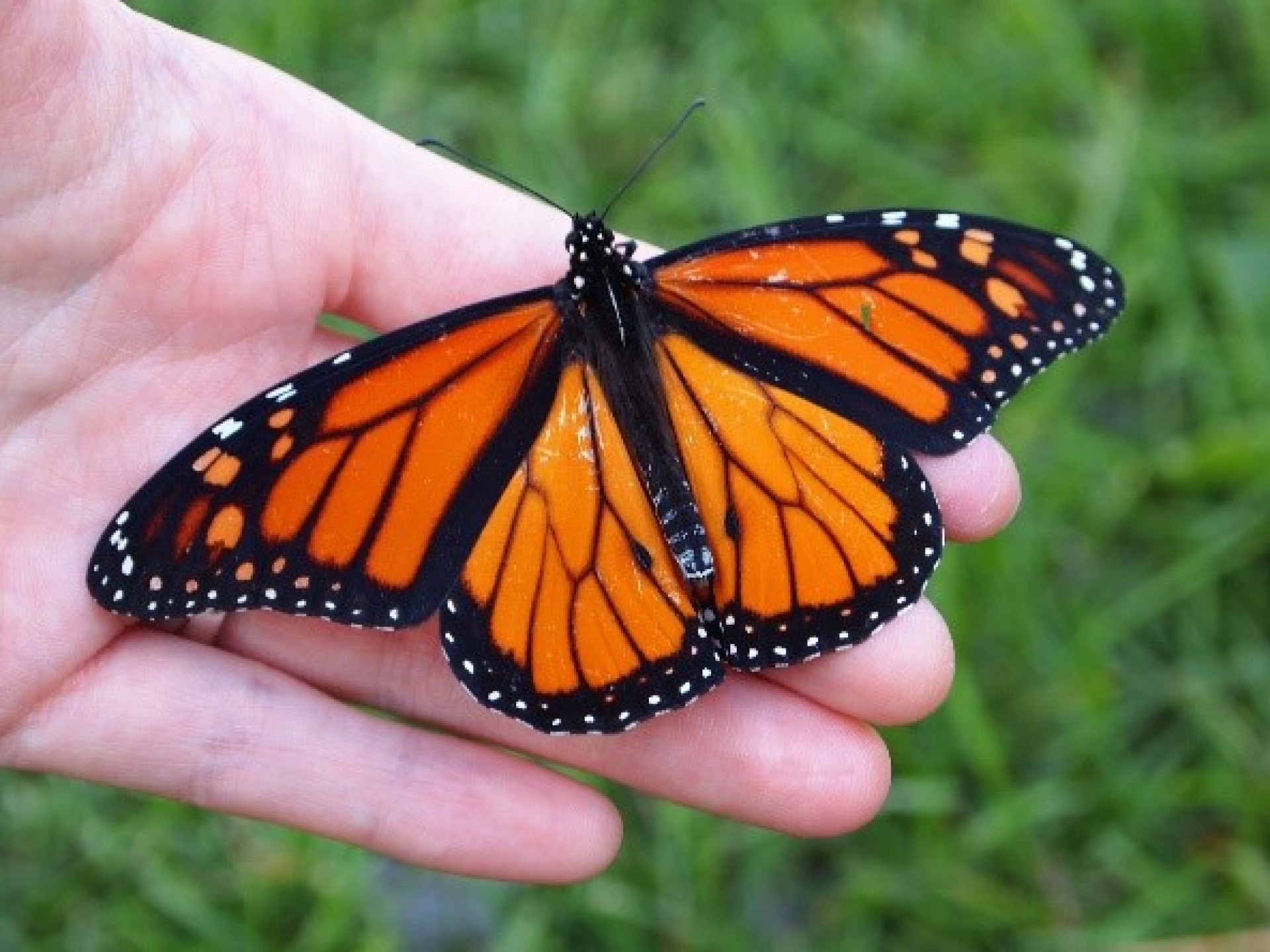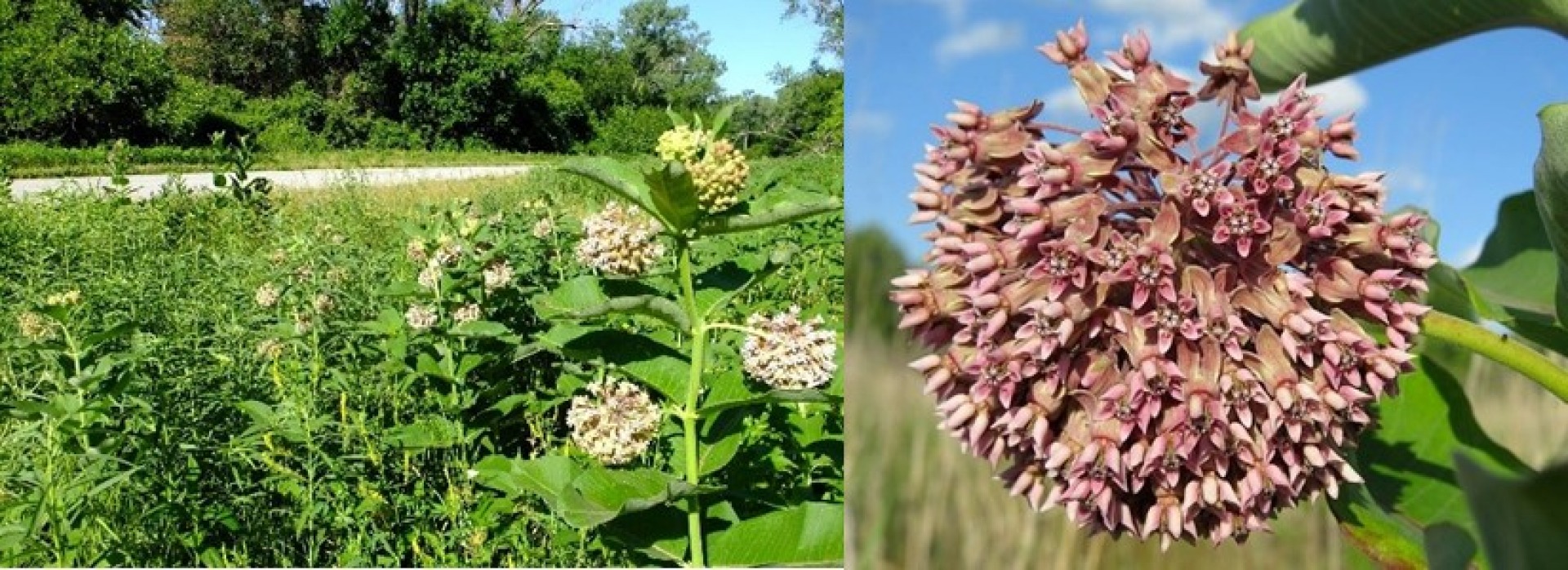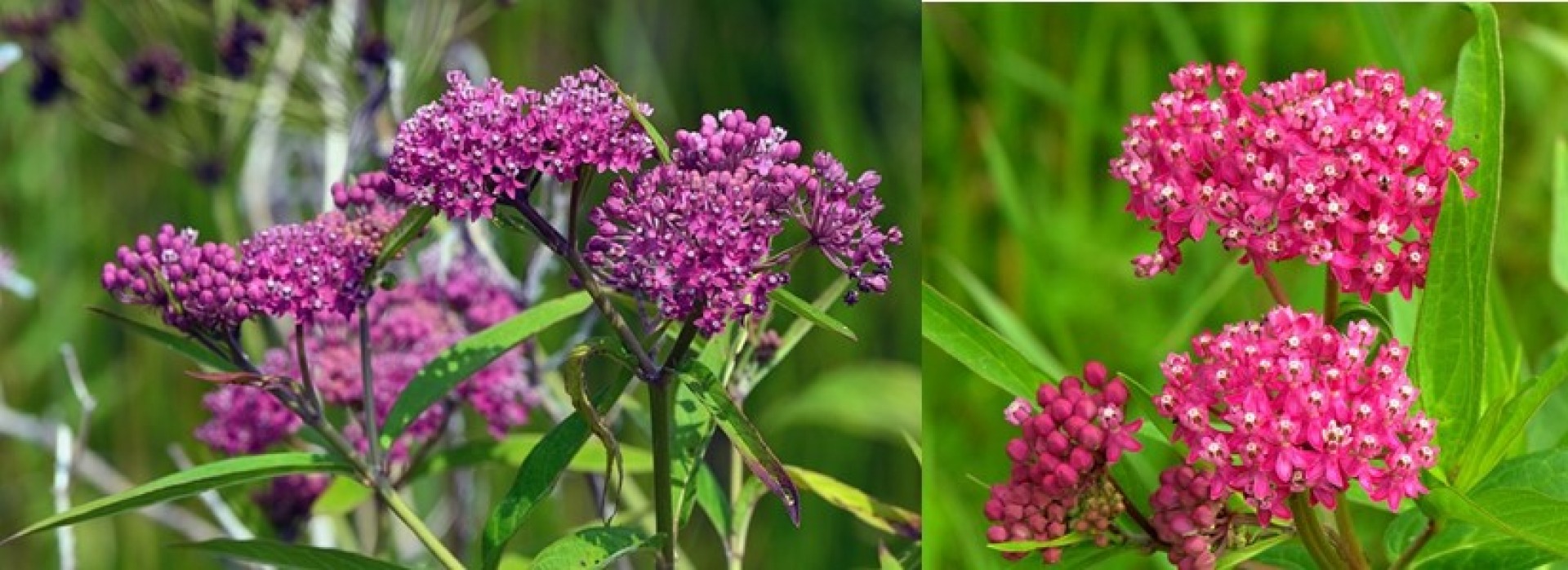These popular topics are heating up. Explore today's most viewed pages.

We are quickly coming to the time of the year where we see monarch butterflies migrating to central Mexico and California. Monarch migration occurs from late August through November and where you live dictates when you will see them migrating through your area. Pottawattamie County sees the migration during the month of September and with this migration, comes many questions about monarchs such as their survival needs, life cycle, and monarch tagging. The answer to many of these questions start with one plant family: milkweeds.
Milkweed is essential for monarch butterflies. Monarchs lay their eggs on the milkweeds. The caterpillars that hatch from these eggs feed exclusively on milkweed leaves and not any other plant family. Because of this, creating, maintaining, and protecting spaces that include this native species is vital to the monarch butterfly’s survival.

One simple way to help monarchs is to grow milkweed in your own outdoor spaces in addition to other native species. There are many types of milkweed native to Iowa. Each are unique in how they look and what conditions they best grow in like soil type and moisture level. Below are a few types of milkweed that could flourish in your outdoor space!
Common milkweed (Asclepias syriaca) blooms June through August and can grow upwards of six feet tall. Its flowers bloom in light to bold pink circular clusters. Common milkweed also has wide, oval-shaped leaves that grow in an opposite pattern up the stem. Many short, dense hairs grow on the stem and leaves of common milkweed, making them look fuzzy. This type of milkweed grows well in open woods, prairies, and disturbed areas in dry to wet conditions. It can be seen growing in a variety of soil types. Common milkweed is also rhizomatous, meaning it will develop a horizontal underground root system and spread with time.

Another native Iowa milkweed is whorled milkweed (Asclepias verticillata). Whorled milkweed blooms from July to September. The white to pale green flowers of whorled milkweed grow in small clusters and the plant grows up to three feet tall. Whorled milkweed has short hairs on its stem and typically on its leaves, but its leaves can be smooth. The leaves are narrow, similar to needles, and grow abundantly up the stem of the plant. Whorled milkweed can be found in prairies, open woods, fields, and flood plains. Whorled milkweed prefers sandy, rocky, or clay soils that are moderately wet to dry.

Swamp milkweed (Asclepias verticillata) is another variety of milkweed native to Iowa which blooms in July and August, growing upwards of five feet tall. It can be smooth or have short hairs on the stem and leaves. The flowers of swamp milkweed vary in color from light pink to rose purple. The flowers bloom in clusters similar to common milkweed, making it difficult to distinguish at times. The easiest way to differentiate between these two varieties are the leaves. The leaves of swamp milkweed are narrow, long, and opposite of one another while common milkweed has much wider leaves. Swamp milkweed is different from the other types of milkweed in that it prefers wet conditions and tolerates moderately wet conditions. It is found in moist prairies, marshes, and along bodies of water.

In addition to these common milkweeds, Iowa is home to many other varieties of milkweed. Butterfly milkweed (Asclepias tuberosa) blooms bright orange from June until August. It prefers drier conditions and sandy, rocky, or loamy soil. Green comet milkweed (Asclepias viridiflora) blooms during June and July with light green flowers. It prefers very dry conditions in rocky or sandy soils. Other native, but rare, varieties that can be seen scattered throughout Iowa include oval-leaf (A. ovalifolia), showy (A. speciosa), and prairie milkweeds (A. sullivantii). These native milkweeds are less common due to their specific needs and are typically less adaptable to variable environments and human disturbance. They can, however, make great additions to your outdoor space with some planning. This planning includes thinking about the type of soil you have, the amount of sunlight the space gets, and the amount of water that the area gets as well as how much it retains.

There are many resources to help you start growing milkweed in your own outdoor space, including the resources listed below. You can also add other types of plants to your outdoor space that benefit monarchs. Adult monarch butterflies love having a variety of nectar producing plants to gain energy.
In addition to planting milkweed in your outdoor space, you can learn more about and get involved in monarch tagging. Monarch tagging provides scientists valuable information on the yearly monarch migration. There are still many questions on how organisms this small travel so far, how their homing system works to find their overwintering sites, and how their distribution and abundance changes in parts of the continent throughout the year.

Monarch Watch creates over a quarter of a million tags with unique codes on them each year for volunteers to attach to monarchs as they migrate across North America. You can become a citizen scientist by learning how to capture monarchs and recording important information like monarch gender and geographic location of where you tagged the monarch. All of the data collected by citizen scientists is then compiled together to better understand this amazing species.
Resources:
Resources for Gardening for Biodiversity & Supporting the Food Web
Where to Get Native Plants & Seeds
Xerces Society Guide to Common Milkweeds of Iowa & Minnesota
Xerces Society Guide to Pollinator Plants